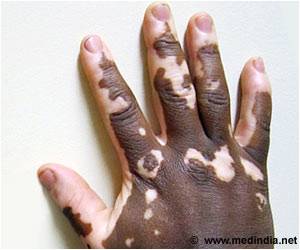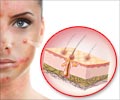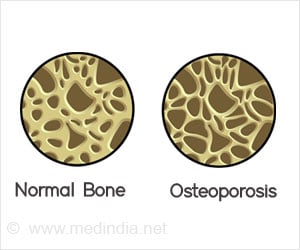The onset of vitiligo - an autoimmune disease with the development of patches in the skin - can be both genetic as well as environmental.

‘Vitiligo that results in loss of color in blotches of skin has both genetic and environmental factors contributing to the onset of the disease.’
Read More..




The findings also show that while the tools for scientific understanding of the genetic basis of a complex disease like vitiligo have advanced, there are still many other as-yet unidentified factors that contribute to vitiligo’s onset.Read More..
"Vitiligo has been perhaps the easiest of all complex diseases to sort out," said senior author Richard A. Spritz, MD, director of the Human Medical Genetics Program and professor of pediatrics at the CU School of Medicine. "Through years of previous studies, we have identified what could be called a ’vitiligo parts list’ of 50 common contributory genes/risk variants."
Spritz and his co-authors reviewed two types of vitiligo cases - simplex and multiplex. In most instances, vitiligo appears in individuals with no family history of the disease, which are referred to as the simplex cases. In the multiplex cases, there are other family members with vitiligo.
A paper by Spritz and his co-authors in the American Journal of Human Genetics combines the 50 vitiligo common risk variants together to make a vitiligo "genetic risk score," and then compared the simplex and multiplex cases.
"The paper could be called a first chapter to the ’vitiligo instruction manual,’" Spritz said. "We found that the vitiligo genetic risk score is higher in the multiplex families than in the simplex cases, and the more affected relatives in the family the higher the risk score. That means that vitiligo in multiplex families and simplex cases is basically the same, but that the families with multiple affected relatives have higher genetic risk. That means that the same treatments probably will be effective in both types of cases."
Advertisement
In addition to Spritz, the authors of the article are Genevieve H.L. Roberts, a PhD candidate in human medical genetics and genomics at CU Anschutz Medical Campus at the time of writing the article; Subrata Paul, a PhD candidate in statistics at CU Denver; Daniel Yorgov, PhD, assistant professor of applied statistics at Purdue University Fort Wayne; and Stephanie Santorico, PhD, professor and director of statistical programs at the Colorado School of Public Health.
Advertisement
"Vitiligo converted from being principally a pediatric-onset to principally an adult-onset disease over the period 1970-2004," Spritz said. "That is amazing. Our genes haven’t changed over that period of time; altered genes or even gene effects don’t seem to be the cause. This must reflect some beneficial environmental change that somehow delays or reduces vitiligo triggering in people who are genetically susceptible. What was it? We don’t know."
The authors write that one or more environmental changes seem to have altered triggering of vitiligo and delayed disease onset, with a similar pattern both in North America and in Europe. "While this apparently beneficial change provides an extraordinary inroad to discover vitiligo environmental triggers, the number of potential candidates is enormous," Spritz and his colleagues write.
Among just a few of the possibilities in the United States: The Clean Air Acts of 1963 and 1970, the Nuclear Test Ban Treaty of 1963, the Water Quality Act of 1969, the establishment of the Occupational Safety and Health Administration in 1970. Globally, sunscreens with sun protection factor ratings were introduced in 1974. Even eating habits may contribute. The authors note that yogurt consumption became more common in the early 1970s, which potentially altered the gut microbiome for many people.
Source-Eurekalert











